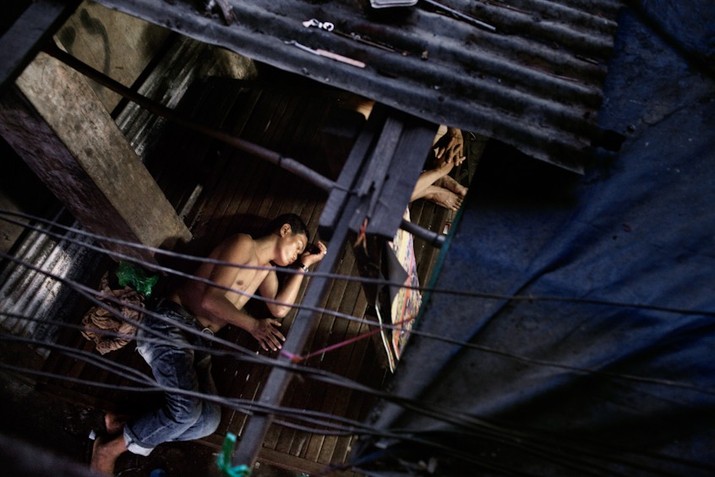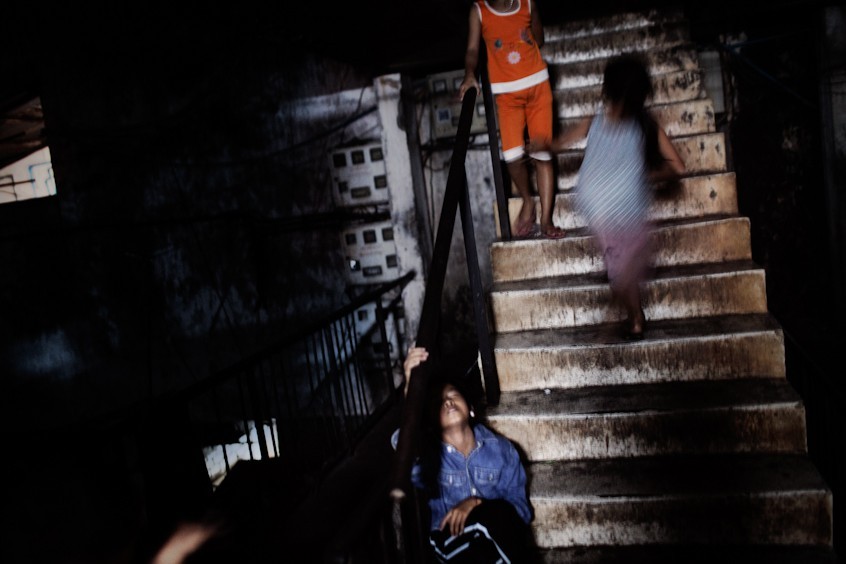
R
E
V N
E
X
T
White Building on Samdach Sothearos Boulevard, Phnom Penh, 2011. Photo by Jonas Hansel.
When I heard Phnom Penh wasn’t a walking city, I bought a good pair of shoes. The evidence on my feet at the day’s end—after dodging motorbikes, piles of trash, street meat smoke, tuktuk offers—was par for the course.
The joy of moving at my own pace offset the challenges, but could not have prepared me for the Twilight Zone I stepped into at the corner of Sothearos Boulevard, a main thoroughfare in the city center. There, I stood, head back, jaw dropped, as vehicles swerved and honked around me, in front of the White Building. I soon learned I was not the only one overcome with this awe.
Within days of arriving in Phnom Penh for the first time, Italian photographer Carlotta Zarattini already decided she would return with a camera around her neck. “Still now, I don’t know what it was,” she said to me of her maiden trip in 2005. “Something about it was magic, scary.” Naturally, she was enchanted by the capital itself, having studied the country extensively during her thesis research on the Khmer Rouge. But it was something more specific, more tangible that drew her in. “When we came across it, we were like ‘WHAT THE FUCK’,” recalling her first encounter with the White Building, an iconic New Khmer modernist structure built in 1963. “That’s when I thought: I want to be a photographer, I want to be able to tell this story."
Today, the 468-apartment White Building spans six blocks, commanding a powerful presence on a main street in Cambodia’s capital. “White” isn’t exactly accurate: the rotting walls are graying, worn; hints of colorful graffiti peek out of random nooks. Each section is linked with stairwell-bridges decorated with drying clothes; tenants peer out of windows above and gather at food vendors on the street below. Originally built as middle class housing, many of its post-war tenants were low-income squatters. Today, it is both a reminder of Cambodia’s devastating history—particularly the genocide under the Khmer Rouge regime from 1975 to 1979—and a testament to a resilient community.
Artists have long found inspiration in the haunting space, evidenced alone by the plethora of projects at this site (more below). Real estate developers have similarly found an opportunity; in September 2016, a Japanese developer announced its plans to transform the White Building site into luxury apartments. A month later, the developer said it might buy out residents to move forward with the USD 80 million plan. This is not the first time the White Building’s future has been uncertain.
“They’ve been saying it since the first time I went [in 2005],” reacted Zarattini to the latest news of the White Building’s possible demolishment. “This is the story that has gone on for 15 years.” Perhaps the ambiguity around such a site’s existence is what fuels the drive to capture it, making its documentation all the more urgent.
“I was traveling in Cambodia with a sketchbook and a pen,” says South Korean artist Lolli Park, who co-runs
n o w h e r e, an independent art gallery and creative space in Phnom Penh. “When I saw the White Building for the first time [in 2014], I was overwhelmed and my hand automatically started to draw it.”
Then there is Vuth Lyno, co-founder of Sa Sa Bassac contemporary art gallery, who felt the urgency to document the changes to the iconic structure. “One of the priorities is archiving the work [exhibitions, workshops, etc.] we do and creative interactions we had and have at the White Building [since 2010],” he says. “We were anticipating the future uncertainty of this neighborhood [of the White Building] and wanted to be prepared in ensuring that we document the creative experience and production as well as other lessons learned here.” Vuth and his colleagues continue to forge ahead with local initiatives: an exhibition space in the buildings, sessions with young and old locals, a monthly community cinema program, an oral history project, all of which are “a chance for people to exchange stories.”
A timely, fortuitous meeting of Vuth and film and media specialist Martin Potter (the man behind the documentary project Big Stories) led to the joint creation of whitebuilding.org, which initially featured footage produced during film-training workshops with students living in the White Building. Today, it’s a well-organized repository of the work of dozens of artists, a testament to the vibrant and complex space.
The impressive collage of faces and colors on the White Building website echoes that of the “maze,” as Park calls it, of “vendors, kids, hanging clothes, cats on the roof, plants” and—if I may—a feast for the senses. The growing body of work displayed on the site and the attention it has garnered is a statement in itself.
After she returned to Cambodia in 2011, Zarattini’s photographs were published on the New York Times’ Lens Blog with the title “Inside a Cambodian Building, a Feeling,” a sense that resonated in her words when we spoke. “It would be so unfortunate if this very exciting and vibrant community was dispersed,” she says, suggesting that developers could learn from the creative sub-city, which needs a feasible redevelopment plan. “It would be a big loss for Cambodia’s cultural capital and urban heritage.”
Now, we wait, and create.








